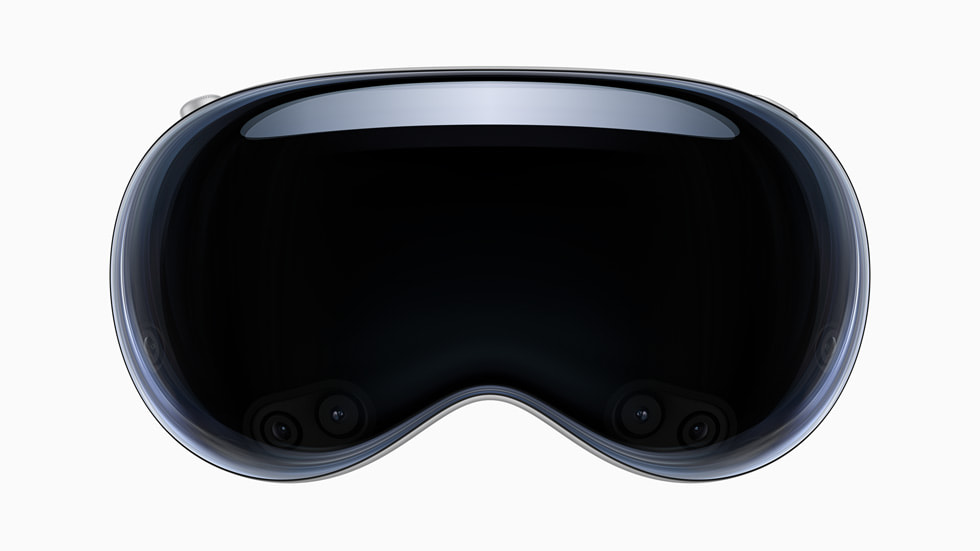
The wait is finally over! After months of speculation and delays, Apple has officially lifted the curtain on its inaugural AR/VR headset. In a momentous announcement, the tech giant revealed its highly anticipated augmented reality headset, Vision Pro, during the annual Worldwide Developers Conference (WWDC) on Monday, June 5th, 2022. The augmented reality headset pushes the boundaries of the physical and digital world, and marks Apple’s first foray into a product that allows users to immerse themselves by looking through rather than merely at it. Apple has tagged its new headset as the first ever “spatial computer”
Tim Cook, the CEO of Apple, confirmed that the Vision Pro headset is set to hit the market early next year with an initial price tag of $3,499. The United States will be the first country to experience its release, followed by other regions later in the year. Cook provided insight into the device, comparing it to a pair of ski goggles equipped with a battery pack and controlled through intuitive eye, hand, and voice gestures.
Vision Pro Features
As one would expect, Vision Pro is replete with sophisticated features. Firstly, the headset has a display system that has 23 million pixels, which is more than a 4K TV for each eye putting into perspective. It also has two micro OLED screens. In addition, the device has custom catadioptric lenses to achieve clarity and sharpness with explosive range and wide color. The device also makes a provision for users with vision impairment with Zeiss Optical Inserts to ensure eye tracking accuracy and visual fidelity.
The Vision Pro stands out with its exceptional performance, powered by Apple’s cutting-edge M2 processor. This dual-core variant of the M2 chip delivers unparalleled speed and efficiency, ensuring seamless operations for all the user’s needs. Complementing this powerful processor is the state-of-the-art R1 chip, specifically designed to process data from an impressive array of 12 cameras, five sensors, and six microphones. With this remarkable combination, the Vision Pro guarantees that the content the users see is always right in front of their eyes. The headset has two hours of battery life with an external portable battery pack, or all day when it’s plugged in.
Vision Pro has an upgraded security authentication system as its Optic ID enables users to unlock the device with their retina. The VisionOS user interface revolutionizes control by harnessing the power of your eyes, hands, and voice, eliminating the need for physical controllers. Interacting with apps is as intuitive as glancing at them, using your fingertips to make selections, effortlessly flicking your wrist to scroll, or simply speaking to dictate commands.
Vision Pro’s EyeSight Functionality
A remarkable feature of the headset is its EyeSight functionality. When someone wearing the headset approaches a user, the device seamlessly adjusts to create a transparent display. This means that they can see an image of your eyes, while you, in turn, can maintain visual contact with them. EyeSight serves as a subtle indicator to others, informing them that you are engaged in an immersive environment or actively using an app, effectively signaling that you are currently occupied.
Positioned as primarily an augmented reality device, Vision Pro also offers the ability to switch seamlessly to full virtual reality via a dial. Remarkably, the headset does away with the need for a handheld controller, enabling users to navigate rows of app icons effortlessly using a new operating system called VisionOS, simply by directing their gaze. Apple delivers on its promise on adding iPhone and iPad apps to the new headset, as Vision Pro enables “thousands of iOS apps.” Additionally, Vision Pro supports popular Bluetooth accessories like the Magic Keyboard and Magic Trackpad.
Apple leverages passthrough videos to project vivid, true-to-life digital objects into the physical environment, allowing users to seamlessly integrate the digital world into their surroundings. For instance, it becomes possible to pluck an object from a message and place it in the real world. Furthermore, Vision Pro utilizes spatial audio for remote conversations, rendering FaceTime participants as large video tiles within the room. The device also captures and relives moments in astonishing detail through its advanced 3D camera.

Vision Pro vs Quest 3
Upon its release, Vision Pro will find itself competing directly with Meta, a well-established player in the market. Meta has enjoyed success with its gaming-focused Quest 2 headset and has garnered considerable attention for its versatile Quest Pro, designed for general-purpose use. Interestingly, Meta announced its new VR headset, Quest 3 only days ago. Although Vision Pro is seven times more expensive than Quest 3, many users will still dream to have the former due to its cutting edge technology. As the battle for dominance in the AR/VR space intensifies, Apple’s Vision Pro is poised to redefine the future of immersive technology.
With Apple’s vision now set in motion, the world eagerly awaits the arrival of the groundbreaking Vision Pro headset and the revolutionary experiences it promises to deliver.
Photo Credit: Apple



